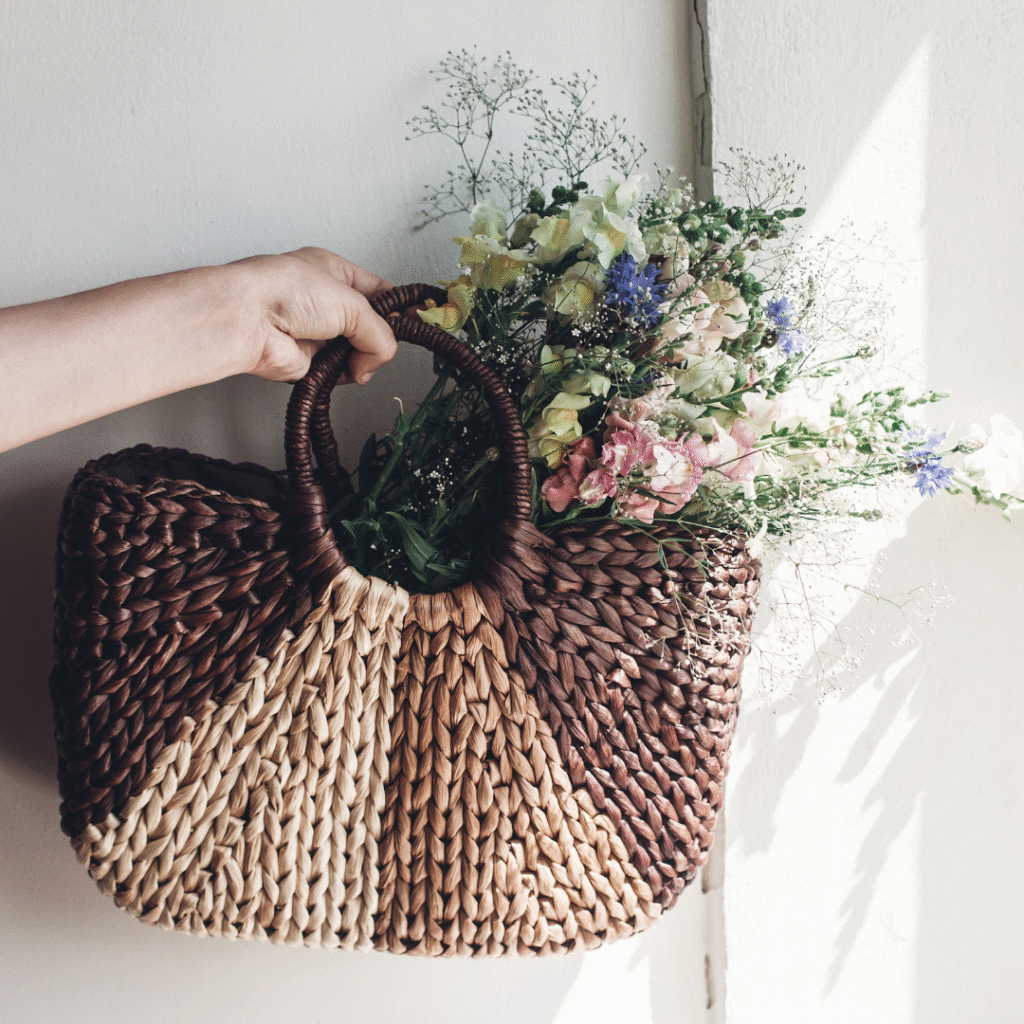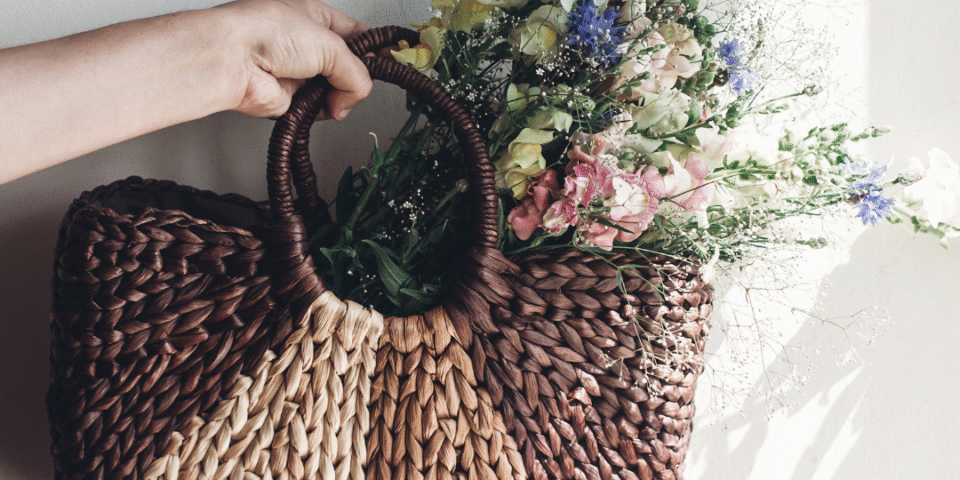Bags to knit are more than just a passing trend; they are a timeless project that combines function, fashion, and the pure satisfaction of creating a practical item with your own two hands. Whether you’re a beginner seeking a simple tote or an advanced knitter ready for complex cables and hardware, learning to knit a bag opens up a world of possibilities for customizing your accessories. Unlike garments, which demand precise fit, bags to knit allow for more creative freedom in yarn choice and structure. Let’s explore the essential elements that turn a skein of yarn into a durable, chic, and absolutely necessary accessory.
The Foundation of Function: Choosing the Right Yarn for Bags to Knit
The single most critical decision when making bags to knit is the yarn. A beautiful stitch pattern can be ruined if the yarn is too flimsy, resulting in a bag that stretches out of shape the moment you put your keys in it. The goal is stability and durability.
The Best Fibers for Structure
- Cotton (100% or Blends): This is often the top recommendation for knitted and crocheted bags. Cotton is celebrated for its strength, resilience, and excellent stitch definition. It pills less than acrylic and maintains a cleaner finish over time.
- Pro Tip: Use a slightly smaller needle size than recommended for the yarn weight to create a tighter, denser fabric that resists stretching, which is crucial for structural items like bags to knit.
- Linen and Hemp: These natural fibers offer incredible inelasticity and durability. While pure linen can be stiff to work with initially, it softens beautifully with use and washing. Hemp is highly sustainable and very strong. Blends of linen or hemp with cotton can strike a perfect balance between strength and softness.
- Jute and Raffia: For market bags, beach bags, or structured clutches, yarns like jute and raffia are perfect. Raffia, made from palm leaves, is water-repellent and holds its shape exceptionally well, providing that chic, summery look. Jute is very sturdy but can be rough on the hands, so some knitters wear gloves when working with it.
- Recycled or T-Shirt Yarns: Also known as ‘Tarn,’ T-shirt yarn is made from recycled textiles (often jersey or cotton-poly blends). Its inherent bulk and sturdiness mean you often don’t need a separate lining for bags to knit made with this material, and they work up incredibly fast.
Why Avoid Certain Yarns?
While wool can be a gorgeous fiber, a non-felted wool bag will easily stretch and sag, especially if carrying weight. If you must use wool, felting (controlled shrinking in hot water) the finished bag is a classic technique used to create a stiff, durable, and almost fabric-like structure. Acrylic blends can be used, particularly for a ‘slouchier’ look, but they are prone to pilling and stretching unless reinforced with a sewn lining.
Stitch Patterns and Techniques: Building a Better Bag
The success of your knitted bag lies not just in the yarn, but in the stitch pattern’s ability to create a dense, stable fabric.
Stitches for Strength
- Garter Stitch: Simple, effective, and it prevents the dreaded rolling that comes with Stockinette. Garter stitch fabric is thick and relatively stable.
- Seed Stitch/Moss Stitch: The combination of alternating knits and purls creates a textured fabric that is much firmer and more resistant to stretching than plain Stockinette. This is an ideal choice for bags to knit that need to hold their shape.
- Ribbing (K1, P1, K2, P2, etc.): While ribbing is stretchy, using it throughout the bag, particularly in a dense yarn, provides a great textured look. More importantly, using it for the top edge will help the opening snap back and hold its shape.
- Cables and Textural Stitches: Cables and intricate textural patterns (like the Herringbone stitch) inherently pull the fabric in, creating a dense, strong material that is perfect for a stylish, structured purse or clutch.
Essential Construction Techniques
- Knitting in the Round: Most successful bags to knit are constructed in the round from the bottom up. This avoids seams on the main body of the bag, making it stronger and preventing the fabric from distorting.
- Reinforced Base: The base or bottom of the bag should be the sturdiest part. Consider knitting the base with two strands of yarn held together, or using a very tight gauge (smaller needles) for the first few rows to ensure a flat, firm foundation. A common method is to start with a flat, oval-shaped base, which gives the finished bag more volume.
- Lining: While not technically knitting, adding a fabric lining is the gold standard for creating durable bags to knit. A simple cotton canvas or linen lining prevents stretching, hides the knot ends and stitches on the inside, and protects your items from snagging. It also allows you to include internal pockets—a functional game-changer.
If you are already deep into the world of organization and project management, you know that keeping your work tidy is half the battle. For tips on managing your WIPs (Works in Progress), check out this related resource: Knitting Project Bags: The Ultimate Guide to Staying Organized.
Hardware and Embellishments: Elevating Your Knitted Bag
What separates a simple knitted sack from a high-end fashion accessory is often the finishing details. Investing in quality hardware for your bags to knit is non-negotiable for a professional look.
Must-Have Hardware
- Straps and Handles: While you can knit your own straps (using techniques like i-cord, or knitting a strip and folding/seaming it), using leather, faux leather, or cotton webbing straps instantly elevates the bag’s appearance and durability. Attach them using D-rings or swivel snap hooks.
- Closures:
- Zippers: Require some sewing skills but provide the most secure closure.
- Magnetic Snaps: Easily sewn into a lining or directly onto the knitted fabric, these offer a professional and convenient snap closure.
- Purse Frames: For classic coin purses or clutches, metal kiss-lock or flex-frame closures offer a vintage, structured look.
- Feet and Corners: Small metal bag feet attached to the base protect the fabric from wear and tear when the bag is set down. Metal corners can also be added to boxy bags for protection and style.
Decorative Details
Modern bags to knit often feature elements like tassels, pom-poms, fringe, or even intricate colorwork (like Fair Isle or tapestry knitting) to make them unique. The current trend is leaning towards bold, minimalist shapes, such as the popular Knitted Japanese Tote Bag (a knot bag) or the simple bucket bag, where the focus remains on the texture and the quality of the knitted fabric itself.

The Historical Context of Bags to Knit
The craft of knitting bags is not new; it has a rich history that underscores the practicality and versatility of the accessory.
Knitted bags and purses have been documented since at least the 16th and 17th centuries. Early examples often included knitted purses made of silk, sometimes incorporating gold or silver threads, and were frequently given as gifts containing money.
A notable surge in the popularity of knitted accessories occurred during the World Wars. During World War I, carrying a knitting bag became a symbol of patriotism on the home front. Women everywhere—from movie stars to everyday citizens—carried large knitting bags, often brightly decorated or featuring the Red Cross symbol, as they continually worked on socks, scarves, and sweaters for the troops. This widespread activity cemented the knitting bag as an essential and respectable accessory, blending fashion with utility. The large, slouchy, utilitarian style of the modern market tote has echoes of these wartime knitting bags.
Mastering the Perfect Gauge: The Key to Durable Bags to Knit
For a bag, your gauge should be significantly tighter than the yarn’s recommended gauge for a garment.
A standard worsted weight yarn (Aran/Medium/4) might recommend a US size 7 or 8 (4.5–5 mm) needle for a sweater. For a knitted bag using the same yarn, you should drop down to a US size 5 or 6 (3.75–4.0 mm).
Why this tight gauge is essential:
- Prevents “Sheer” Fabric: A loose knit will create holes large enough for the interior lining to peek through, or worse, allow small items to fall out.
- Stands Up to Weight: A dense, tight knit is what gives the bag the structural integrity to hold a phone, wallet, or even groceries without stretching several inches out of shape.
Always knit a large enough swatch (at least 6×6 inches) to test the fabric’s stretch and density before casting on for the full project. A good, tight knitted fabric should feel almost stiff.
Modern Trends in Bags to Knit
Today’s knit bags reflect both a return to natural, sustainable fibers and a focus on sleek, modern design.
- The Knot Bag: Inspired by Japanese design, this bag features two asymmetrical handles that loop through each other for closure. It requires simple stitches (often garter or stockinette) and the unique shape is achieved through clever folding and seaming. It is simple, minimalist, and very much on trend.
- Structured Bucket Bags: These require very sturdy yarn (like T-shirt yarn or a heavy cotton) or felting. They have a round, flat base and a tall, rigid body, often finished with a drawstring closure and high-quality leather handles.
- Recycled Yarn Totes: The focus on sustainability means that bags to knit made from recycled materials, such as polyester from plastic bottles or reclaimed cotton, are extremely popular. These yarns are often surprisingly durable and make a great eco-friendly statement.
The versatility of bags to knit allows the knitter to create everything from a delicate beaded evening clutch (a style popularized in the 19th century) to a massive, practical grocery tote. The best knitted bag is the one that perfectly marries function and personal style, resulting in an accessory you’ll reach for every single day.
External Resource for Hardware and Supplies:
If you’re ready to take your knit bags to the next level with professional finishes, you’ll need quality hardware. A great resource for all kinds of bag making accessories, including swivel hooks, zippers, magnetic snaps, and D-rings in various finishes, is WAWAK.
Ultimately, making bags to knit is one of the most rewarding knitting pursuits. It allows for quick, satisfying results and produces a finished object that is not just decorative, but a genuinely useful part of your everyday life. So grab that sturdy cotton, size down those needles, and cast on! What kind of bags to knit will you create first?

